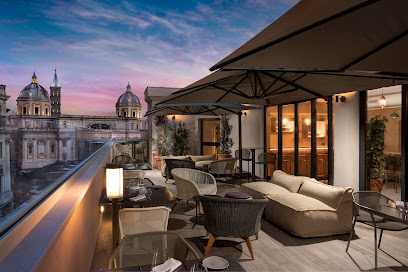
The Majestic Colosseum: A Testament to Ancient Rome
Discover the Colosseum, an iconic symbol of Rome's rich history and architectural grandeur, where ancient gladiators once battled for glory.
Experience the awe-inspiring Colosseum, an iconic symbol of Rome's rich history, where gladiators once battled and emperors ruled. This architectural marvel invites you to explore its grandeur and witness the stories etched in its stones.
A brief summary to Koloseum
- Via del Colosseo, 1, Rome, Metropolitan City of Rome Capital, 00184, IT
Local tips
- Purchase your tickets online in advance to avoid long queues, especially during peak tourist season.
- Consider visiting early in the morning or later in the afternoon for a less crowded experience and cooler temperatures.
- Take a guided tour to gain deeper insights into the history and significance of the Colosseum and its surrounding areas.
- Wear comfortable shoes, as exploring the Colosseum and its surrounding sites involves a fair amount of walking on uneven surfaces.
- Bring a water bottle and stay hydrated, especially during the warmer months, as there are few places to buy refreshments nearby.
Getting There
-
Walking
If you are already in the Colosseo neighborhood, you can easily reach Koloseum by walking. Head towards Via del Colosseo, which is the main street leading directly to the site. The Koloseum is located at Via del Colosseo, 1. It's a short walk, approximately 5 minutes from the nearest metro station, Colosseo (Metro Line B). Just follow the signs and the crowd of tourists!
-
Public Transportation
If you are further away, take the Metro Line B to the Colosseo station. Once you exit the station, follow the signs for 'Colosseo.' You will emerge directly in front of the Koloseum. The metro ride costs €1.50, and the journey time varies depending on your starting point, but it generally takes around 15-30 minutes to reach Colosseo from central locations.
-
Bus
You can also take several bus lines that stop near the Koloseum. For example, buses 75, 81, 673, and 3 all have stops at 'Colosseo.' Check the nearest bus stop for schedules. The bus fare is also €1.50, and make sure to validate your ticket before boarding. From the bus stop, it’s just a short walk to the entrance.
Discover more about Koloseum
Iconic landmarks you can’t miss
Koloseum
0.0 km
Discover the Colosseum, an iconic symbol of Rome's rich history and architectural grandeur, where ancient gladiators once battled for glory.
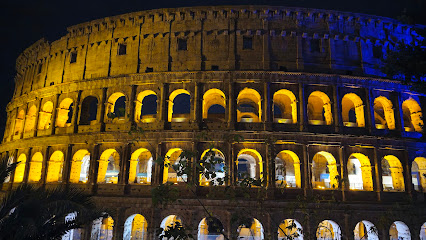
Hotel Romano
0.1 km
Experience the heart of Rome at Hotel Romano, where comfort meets convenience near iconic landmarks and local culture.

Colosseum
0.1 km
Discover the awe-inspiring Colosseum in Rome, a monumental testament to ancient history and architectural brilliance.
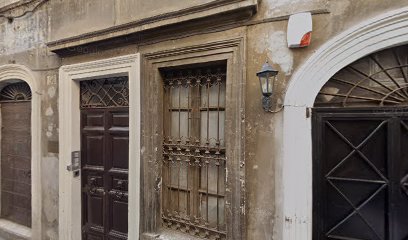
Via della Madonna dei Monti, 82
0.1 km
Experience the enchanting beauty of Via della Madonna dei Monti, a historic street in Rome filled with charm, culture, and local delights.
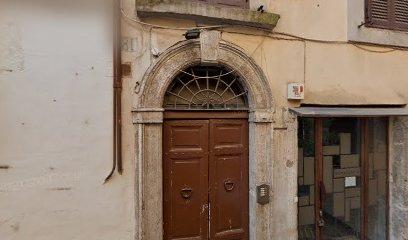
Via dei Fori Imperiali
0.1 km
Discover the stunning history and breathtaking views along Via dei Fori Imperiali, Rome's iconic street filled with ancient ruins and vibrant atmosphere.
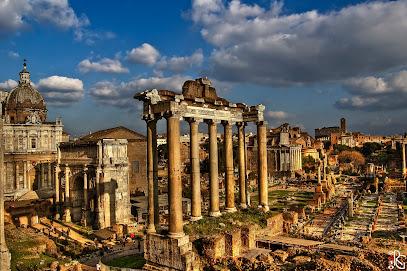
Forum of Augustus
0.2 km
Explore the grandeur of the Forum of Augustus, a must-visit historical landmark in Rome, where ancient history and stunning architecture come to life.
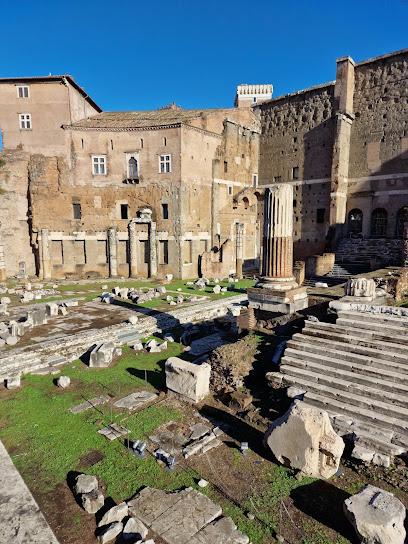
Roman Forum
0.2 km
Discover the rich history of ancient Rome at the Roman Forum, a breathtaking open-air museum filled with remarkable ruins and captivating stories.
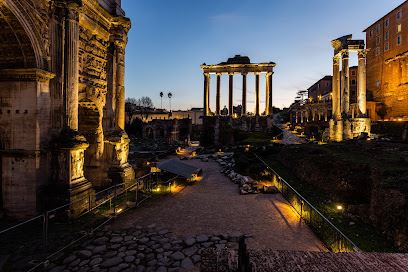
Piazza del Grillo
0.2 km
Explore the enchanting Piazza del Grillo in Rome, where history meets vibrant culture amidst stunning architecture and lively street performances.
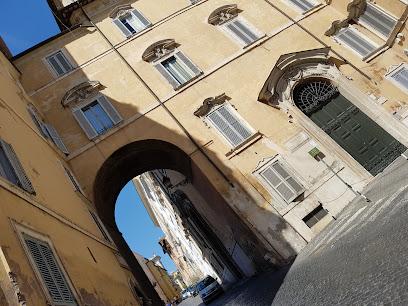
Fountain of the Catechumens
0.2 km
Experience the elegance and history of the Fountain of the Catechumens in Rome, a serene spot surrounded by vibrant local culture.
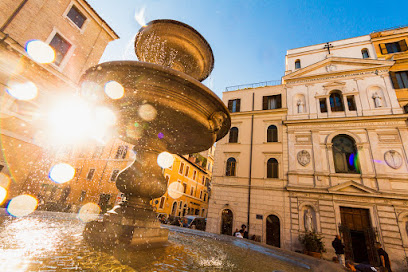
Piazza della Madonna dei Monti
0.3 km
Explore the charm of Piazza della Madonna dei Monti, a vibrant Roman square filled with local culture, delicious cuisine, and stunning architecture.
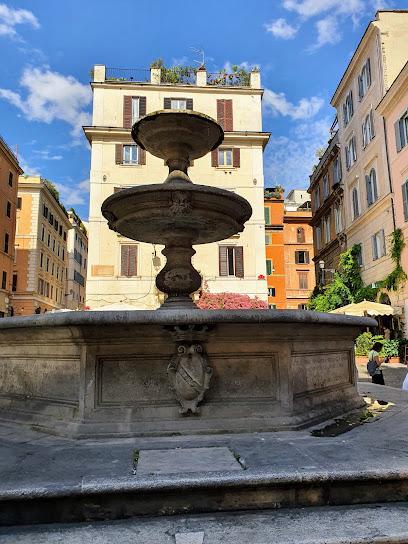
Via del Colosseo & Largo Gaetana Agnesi
0.3 km
Discover the intersection of ancient history and vibrant culture at Via del Colosseo & Largo Gaetana Agnesi in Rome, a must-visit for every traveler.
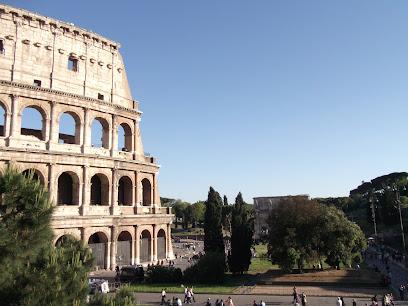
Piazza della Madonna dei Monti, 4
0.3 km
Discover the enchanting Piazza della Madonna dei Monti, a serene square in Rome, perfect for relaxation and local cultural experiences.
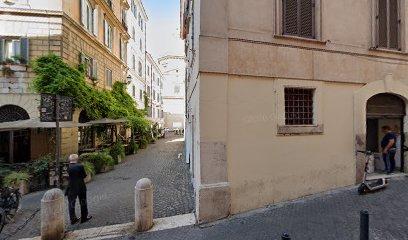
House of the Vestals
0.3 km
Discover the ancient secrets of the House of the Vestals in the heart of Rome, where history and mystery intertwine in stunning ruins.
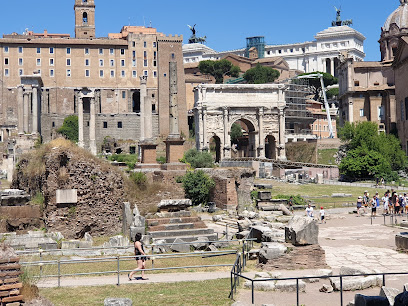
Arch of Titus
0.3 km
Explore the Arch of Titus in Rome - a breathtaking monument showcasing the triumphs of the Roman Empire, rich in history and architectural beauty.

L.go Gaetana Agnesi
0.3 km
Experience the charm of L.go Gaetana Agnesi, a serene square in Rome that offers a peaceful escape amidst the city's vibrant energy.
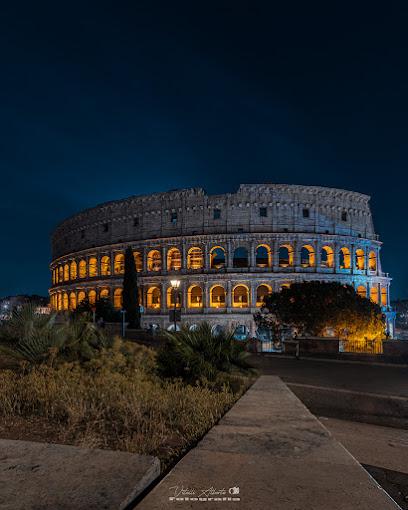
Unmissable attractions to see
Largo Corrado Ricci
0.1 km
Explore Largo Corrado Ricci, a captivating historical landmark in the heart of Rome, offering a blend of stunning architecture and vibrant local culture.
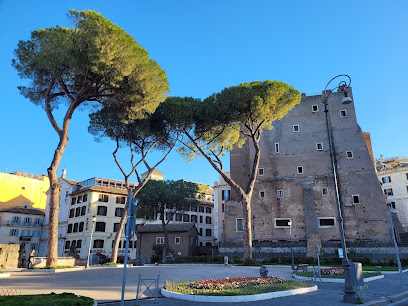
Fontana dei Fori Imperiali
0.1 km
Explore the enchanting Fontana dei Fori Imperiali, a stunning fountain surrounded by ancient Roman ruins in the heart of historic Rome.
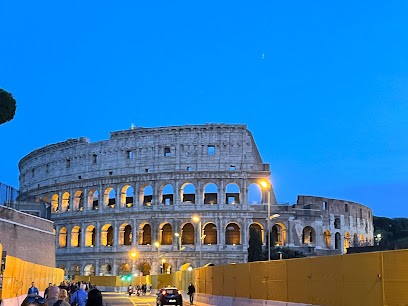
Forum of Nerva
0.1 km
Discover the captivating history of the Forum of Nerva, a key landmark of Ancient Rome that reveals the splendor of the Roman Empire.
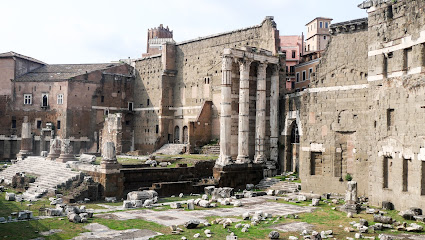
Pietre d'inciampo in memoria della famiglia Di Consiglio
0.1 km
Explore the poignant Pietre d'Inciampo in Rome, a heartfelt tribute to Holocaust victims that invites reflection and remembrance.
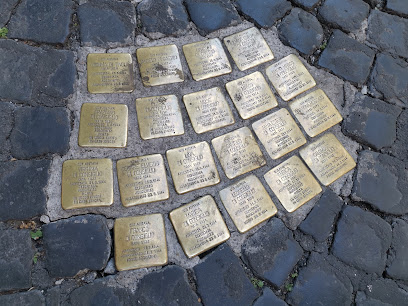
Basilica of Maxentius
0.1 km
Discover the awe-inspiring Basilica of Maxentius in Rome, where ancient architecture and rich history converge to create an unforgettable experience.
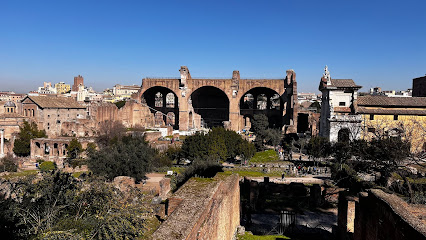
Santi Cosma e Damiano
0.2 km
Experience the rich history and stunning architecture of Santi Cosma e Damiano, a must-visit basilica in the heart of Rome.

Tempio della Pace
0.2 km
Discover the tranquil beauty of Tempio della Pace, a historical landmark in Rome that symbolizes peace and reverence amidst the city's rich heritage.
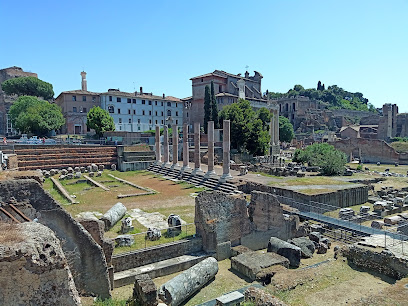
Largo Romolo e Remo
0.2 km
Explore the historical allure of Largo Romolo e Remo, where ancient stories meet the vibrant culture of Rome in a picturesque setting.
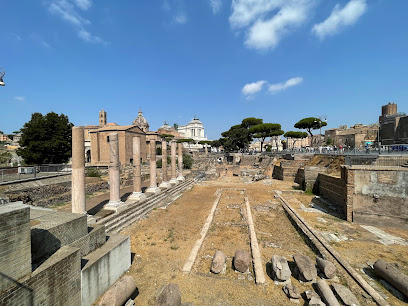
Tempio di Romolo
0.2 km
Explore the Tempio di Romolo, a captivating archaeological gem in Rome's historic landscape, where ancient history and stunning architecture come alive.
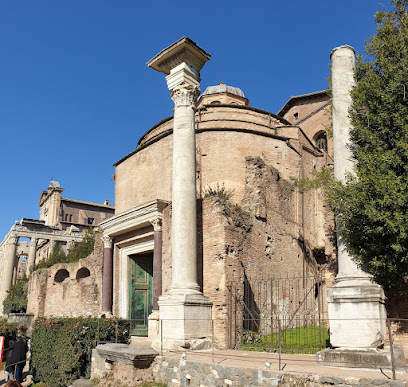
Arco dei Pantani
0.2 km
Explore the Arco dei Pantani, a stunning triumphal arch in Rome that embodies the city's rich history and remarkable architecture.
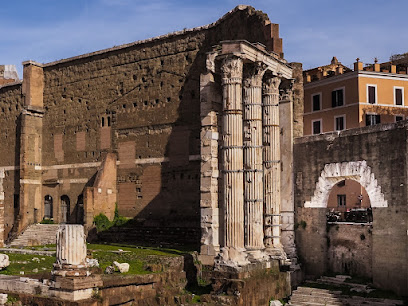
Antoninus and Faustina Temple
0.2 km
Discover the Antoninus and Faustina Temple, a stunning ancient Roman temple that showcases the grandeur and artistry of Rome's architectural heritage.

Foro di Augusto
0.2 km
Discover the majestic ruins of Foro di Augusto, a historical landmark that reveals the grandeur of ancient Rome and its imperial past.
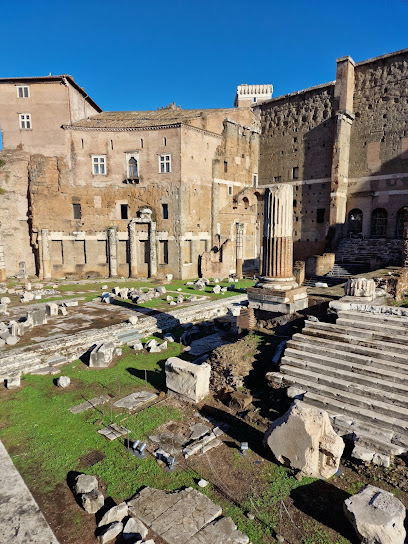
Medieval Portico
0.2 km
Uncover the historical marvel of Medieval Portico in Rome, where ancient architecture meets the vibrant pulse of the Eternal City.

Chiesa di Santa Maria ai Monti
0.2 km
Discover the serene beauty of Chiesa di Santa Maria ai Monti, a captivating Catholic church in Rome blending history, art, and spirituality.
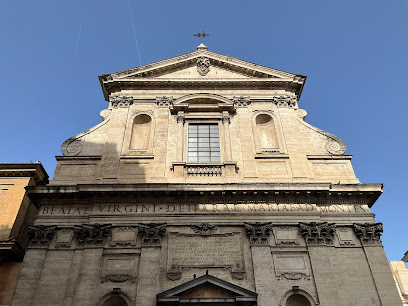
Campanile della Basilica di Santa Francesca
0.2 km
Explore the stunning Campanile della Basilica di Santa Francesca in Rome - a beautiful blend of history, architecture, and spirituality.
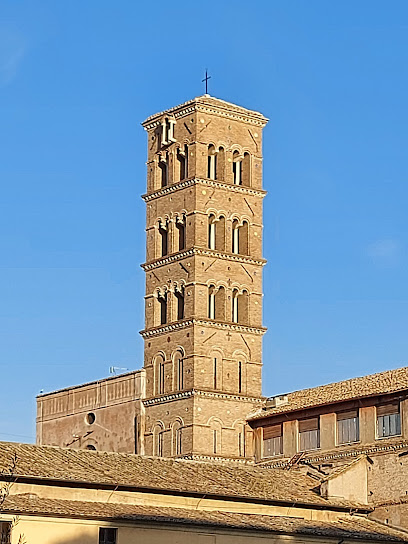
Essential places to dine
Iari The Vino
0.0 km
Experience authentic Italian cuisine at Iari The Vino in Rome - home to exquisite ravioli and warm hospitality.
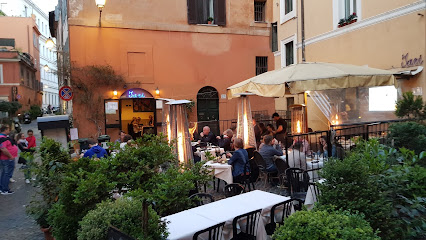
La Taverna dei Fori Imperiali
0.1 km
Experience authentic Italian cuisine at La Taverna dei Fori Imperiali in Rome – where tradition meets flavor in every dish.
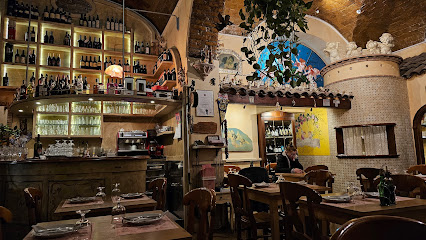
Ristorante Roof Garden
0.1 km
Experience exquisite Italian cuisine with breathtaking views at Ristorante Roof Garden in the heart of Rome.
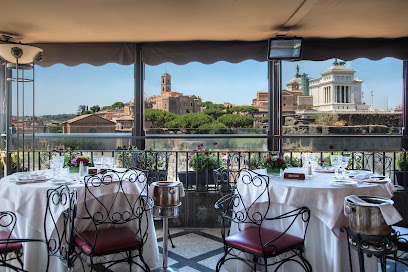
Ce Stamo A Pensà
0.3 km
Experience authentic Southern Italian cuisine at Ce Stamo A Pensà in Rome—where every dish tells a story.
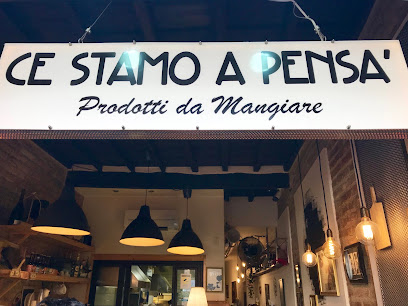
Hostaria da Nerone
0.4 km
Experience the essence of Rome at Hostaria da Nerone with authentic dishes that celebrate Italy's rich culinary heritage.
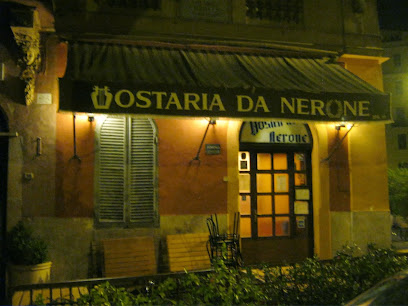
Unique Al Palatino Garden Restaurant
0.5 km
Experience authentic Italian cuisine amidst lush gardens at Unique Al Palatino Garden Restaurant in Rome.
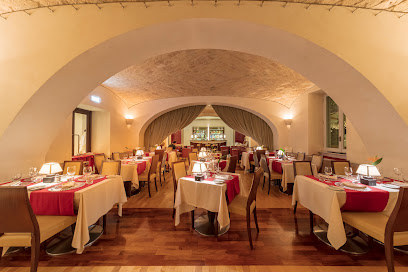
Non c’è trippa pe’ gatti
0.6 km
Discover authentic Italian flavors at Non c’è trippa pe’ gatti - a must-visit seafood restaurant in Rome's lively heart.
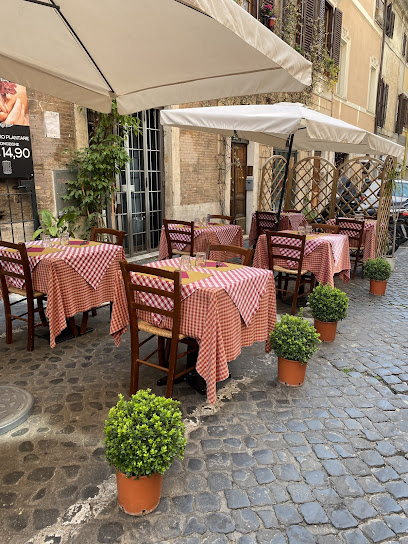
RoYaL Art Cafè
0.6 km
Discover RoYaL Art Cafè - where exquisite Italian cuisine meets artistic ambiance near Rome's historic Colosseum.
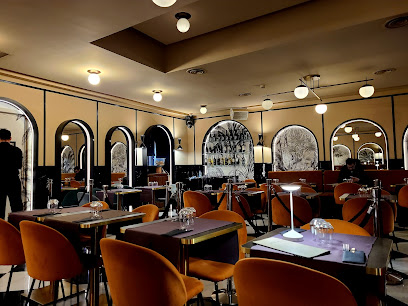
Ristoro Della Salute
0.6 km
Experience authentic Italian cuisine at Ristoro Della Salute, just steps from Rome's Colosseum - where tradition meets inclusivity.
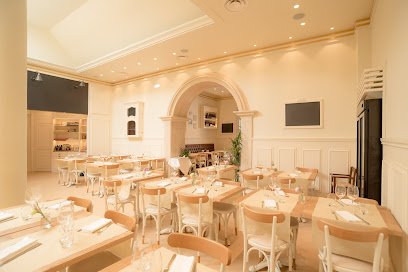
Ristorante Caffè Martini & Rossi
0.6 km
Experience exquisite Italian cuisine at Ristorante Caffè Martini & Rossi with stunning views of the Colosseum in Rome.
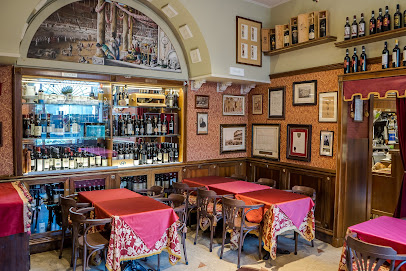
In Roma - since 1917
0.6 km
Discover authentic Italian flavors at In Roma - where tradition meets culinary excellence in the heart of Rome.
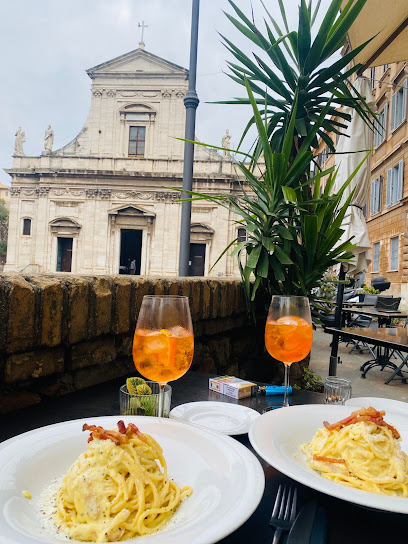
Hostaria Al Gladiatore
0.6 km
Experience authentic Italian dining at Hostaria Al Gladiatore near Rome's iconic Colosseum - where tradition meets flavor.
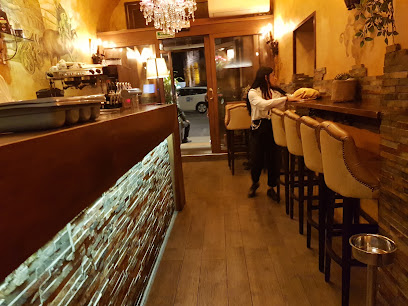
Ristorante Tema
0.6 km
Experience authentic Italian cuisine at Ristorante Tema in Rome, where fresh seafood meets traditional Roman flavors in a cozy atmosphere.
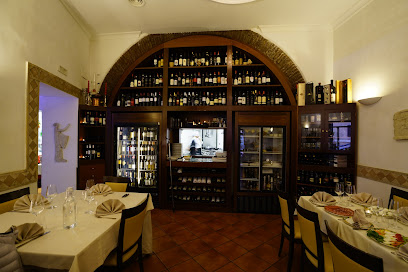
Osteria Angelino dal 1899
0.6 km
Experience authentic Roman cuisine at Osteria Angelino dal 1899 - where tradition meets flavor in every dish.
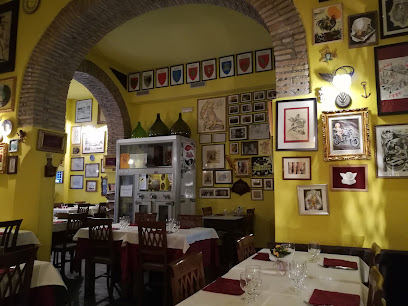
Aroma
0.6 km
Experience exquisite Italian dining at Aroma with stunning views of the Colosseum in Rome.
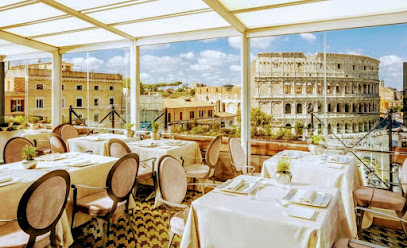
Markets, malls and hidden boutiques
King Size Vintage
0.3 km
Shop unique vintage clothing at King Size Vintage in Rome, where every piece has a story and timeless style awaits.
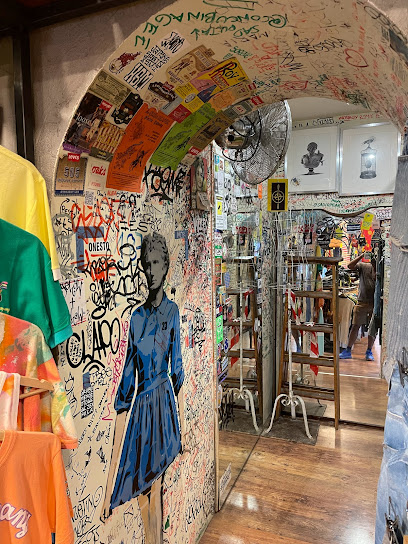
Boutique dei Serpenti - Borse e Bijoux Roma
0.3 km
Explore Boutique dei Serpenti in Rome for exquisite Italian handbags and jewelry, showcasing unique craftsmanship and timeless style.
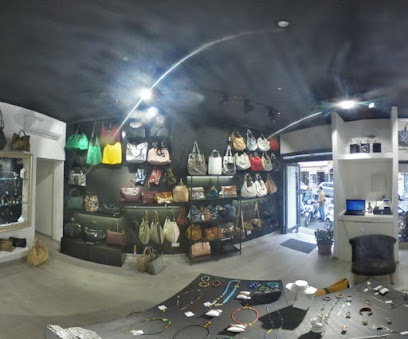
Pifebo Vintage Shop
0.3 km
Explore Pifebo Vintage Shop in Rome for unique vintage clothing and accessories, where every piece tells a story of timeless fashion.
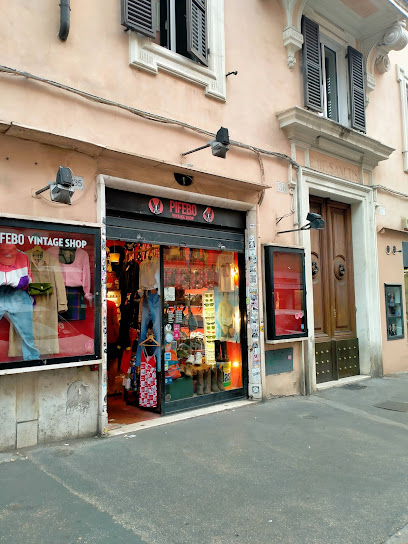
The Oliver wardrobe
0.3 km
Discover unique vintage and baby clothing at The Oliver Wardrobe, a charming used clothing store in the heart of Rome.
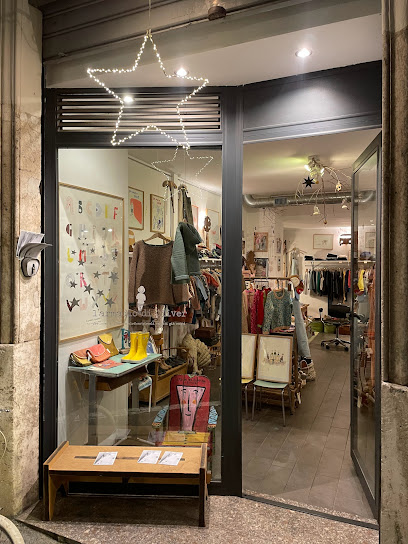
PODERE VECCIANO
0.3 km
Discover authentic Italian flavors and exquisite wines at Podere Vecciano, the charming supermarket and grocery store in the heart of Rome.
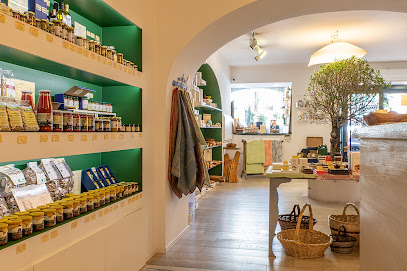
SUFIR
0.3 km
Discover SUFIR in Rome: your ultimate destination for exquisite leather goods, handcrafted handbags, and stylish dresses.
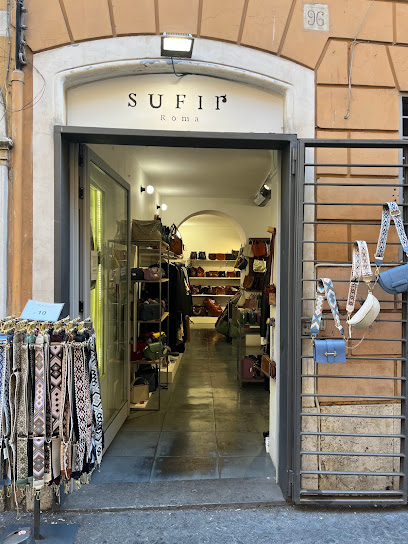
Hang Roma - Unconventional Leather Bags Handmade in Rome - Borse e Accessori In cuoio
0.4 km
Discover the charm of Italy through exquisite handmade leather goods at Hang Roma, a premier destination for fashion enthusiasts and souvenir hunters alike.
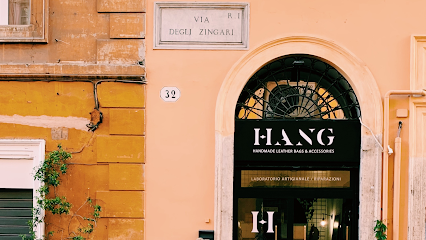
Souvenir Roma
0.4 km
Discover exquisite gifts and authentic Italian souvenirs at Souvenir Roma, the ultimate stop for tourists in Rome.
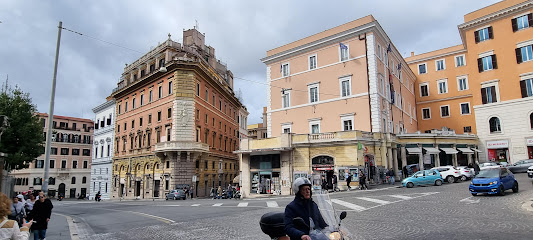
Kokoro
0.4 km
Explore Kokoro, a chic women's clothing boutique in Rome, showcasing unique styles and quality fashion for every occasion.

Blue Goose
0.4 km
Explore a vintage clothing haven in Rome's heart, where every piece tells a story and fashion meets history.
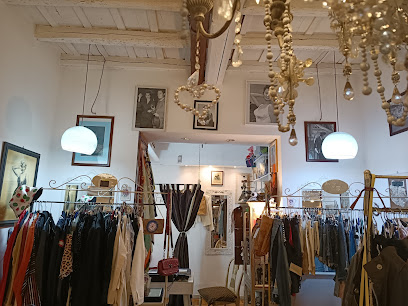
Pulp vintage
0.5 km
Discover timeless fashion treasures at Pulp Vintage, a unique clothing store in the heart of Rome, where each piece tells a story.
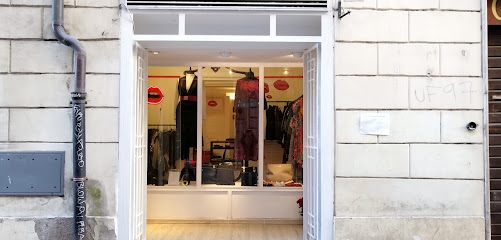
Souvenir shop (gift)
0.6 km
Explore a delightful souvenir shop in Rome, offering unique gifts and authentic Italian craftsmanship, perfect for capturing your travel memories.

Grezzo Raw Chocolate
0.6 km
Discover the exquisite flavors of Grezzo Raw Chocolate, an artisanal haven for passionate chocolate lovers in the heart of Rome.
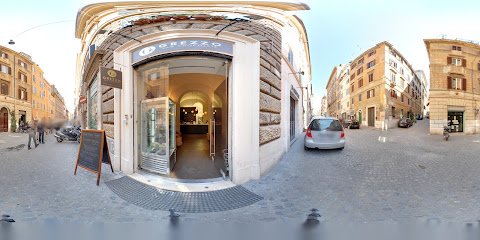
Suede
0.6 km
Discover exquisite men's footwear and stylish clothing at Suede, your premier shopping destination in the heart of Rome.

BD-SAS
0.6 km
Discover the essence of Rome at BD-SAS, a charming souvenir store offering unique bags and gifts that embody Italian craftsmanship.
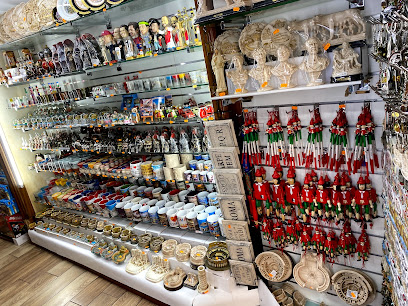
Essential bars & hidden hideouts
Shamrock
0.0 km
Experience the charm of an Irish pub in Rome, where delicious food, refreshing drinks, and a lively atmosphere await you near the Colosseum.
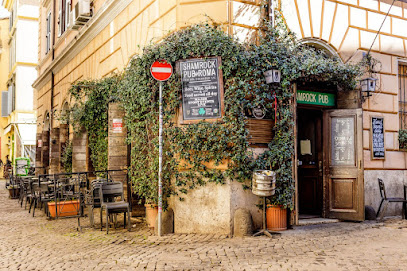
Ice Club Roma
0.1 km
Experience the coolest nightlife at Ice Club Roma, where unique cocktails and vibrant parties await you in the heart of the Eternal City.
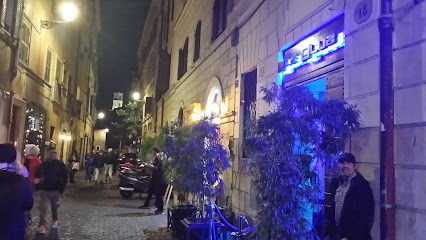
Ex Galleria
0.1 km
Discover the perfect fusion of cocktail culture and contemporary art at Ex Galleria, Rome's hidden gem for an unforgettable night out.
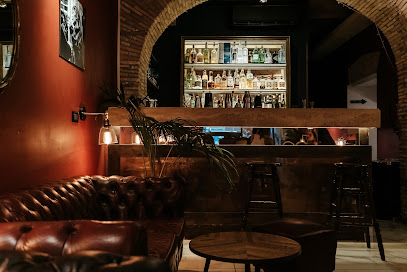
Caffè Roma
0.2 km
Experience the charm of Caffè Roma - a cozy coffee shop near the Colosseum, perfect for a delightful break in Rome.
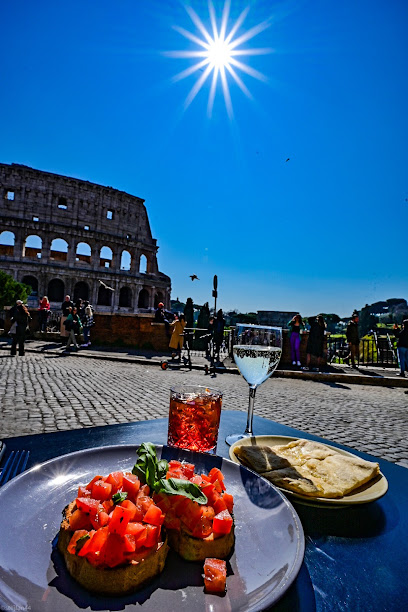
Oppio Caffè
0.4 km
Experience the authentic taste of Italy at Oppio Caffè, a delightful café in Rome offering exquisite dishes, refreshing cocktails, and a vibrant atmosphere.
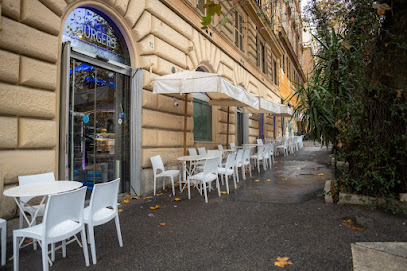
Ri.ONE RoofTop Cocktail bar
0.4 km
Discover the best views and unique cocktails at Ri.ONE RoofTop Cocktail Bar, your perfect escape in the heart of Rome, Italy.
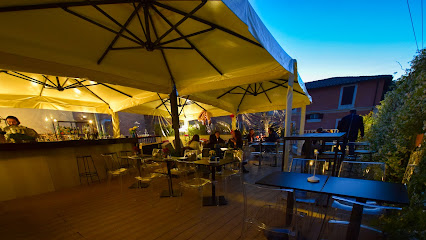
Blackmarket Hall
0.6 km
Discover Blackmarket Hall: A vibrant cocktail bar and bistro in Rome offering delicious food, exquisite cocktails, and live music in a lively atmosphere.
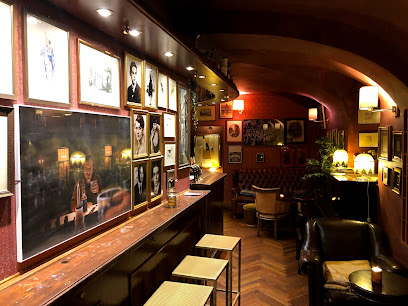
Coming Out
0.6 km
Discover the vibrant atmosphere of Coming Out, a renowned gay bar and restaurant in Rome, where inclusivity and nightlife come together.
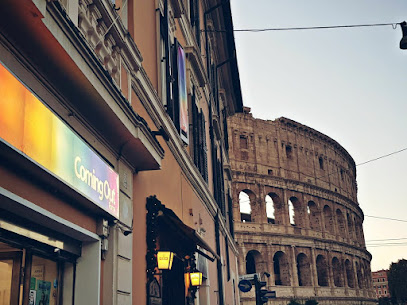
The Court Bar. Palazzo Manfredi
0.6 km
Experience the epitome of Roman elegance at The Court Bar, where handcrafted cocktails meet stunning views of the Colosseum.

Colosseum Bar
0.7 km
Discover Colosseum Bar, where Rome's vibrant cocktail and coffee culture come alive in a stylish setting, perfect for tourists seeking local flavors.
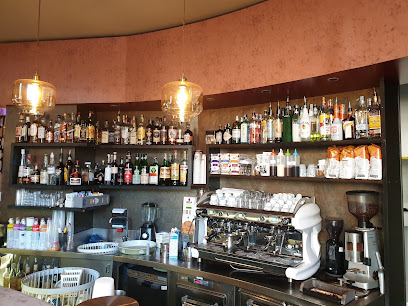
Otivm Roof Bar
0.7 km
Discover the enchanting Otivm Roof Bar, where exquisite cocktails meet breathtaking views in the heart of Rome's vibrant nightlife.
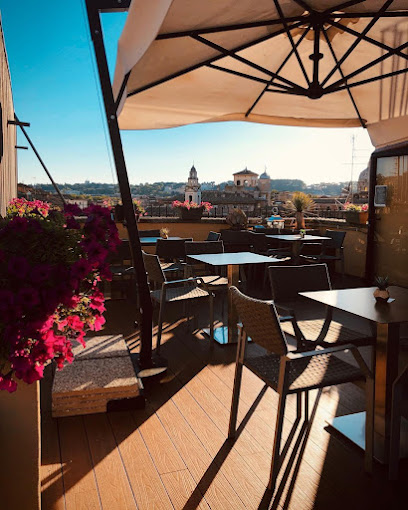
Drink Kong
0.8 km
Experience innovative cocktails in a stylish atmosphere at Drink Kong, Rome's premier cocktail bar, perfect for an unforgettable night out.

Voodoo Bar
0.8 km
Experience the vibrant nightlife of Rome at Voodoo Bar, known for its eclectic cocktails and lively atmosphere.

Enoteca Colosseo
0.8 km
Experience the finest Italian wines at Enoteca Colosseo, a charming wine bar in the heart of Rome, blending culture, flavor, and ambiance.

Mùn Rooftop Cocktail Bar
0.9 km
Mùn Rooftop Cocktail Bar: A stunning rooftop escape in Rome, blending exquisite cocktails with breathtaking views of the Eternal City.
